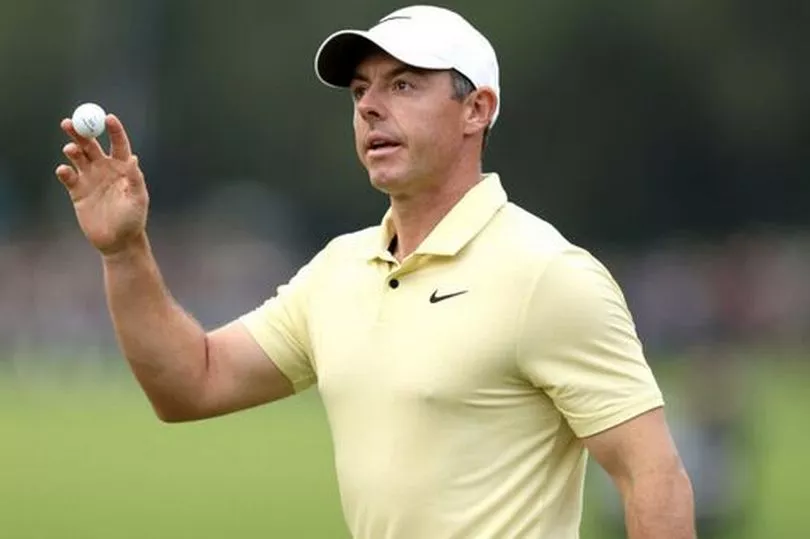Rory McIlroy Pushes for Drastic Changes in the PGA Tour—A Call for a ‘Cut-Throat’ Era That Could Redefine Golf
Rory McIlroy Pushes for Drastic Changes in the PGA Tour—A Call for a ‘Cut-Throat’ Era That Could Redefine Golf
Rory McIlroy is no stranger to controversy, and once again, he is stepping into the fray with bold ideas that could transform professional golf. The Northern Irishman, known not only for his unparalleled skill but also for his outspoken nature, has now called for a more “cut-throat” approach within the PGA Tour. With the future of golf hanging in the balance, McIlroy’s radical vision is set to challenge the very foundations of the sport, leaving both fans and critics wondering—could this change everything?
It wasn’t long ago that McIlroy found himself at odds with the PGA Tour Policy Board. His tenure on the board was marked by tension, and in 2023, he made the unexpected decision to resign. Yet, despite stepping down, McIlroy’s passion for the game and his desire to elevate its competitive edge never wavered. Now, as he looks to the future of the sport, McIlroy’s voice has never been louder, advocating for fewer tour cards, smaller fields, and a more elite level of play.
At the BMW PGA Championship, McIlroy’s second-place finish was a testament to his unwavering drive. But it was his words off the course that left the golfing world buzzing. McIlroy has made it clear that he believes the PGA Tour needs to embrace a model that prioritizes only the very best, creating a smaller, more exclusive group of players. His vision, which echoes elements of LIV Golf’s limited fields and guaranteed payouts, suggests a future where only the cream of the crop would battle it out for the sport’s highest honors.
“I’m all for making it more cut-throat, more competitive,” McIlroy said, knowing full well that his perspective would stir controversy. “Probably won’t be very popular for saying this, but I’m all for less players and less tour cards, and the best of the best.”
The notion of reducing the number of tour cards and tightening the field size may seem extreme to some, but McIlroy is convinced that this is the key to ensuring that only the very best are competing at the highest level. His proposal comes after a season that saw changes in designated events, where fields were trimmed and the number of competitors was noticeably reduced. McIlroy, however, believes that this should not just be a temporary change, but a permanent shift in the structure of the tour.
The PGA Tour has been grappling with the fallout of LIV Golf’s emergence. With its promise of guaranteed money and smaller, more concentrated fields, LIV Golf has attracted several top players. McIlroy’s support for a similar model within the PGA Tour signals that he believes the future of professional golf lies in its exclusivity. In his mind, fewer players mean more intense competition, and more intense competition will, in turn, lead to a higher quality of play.
This season, the PGA Tour made strides toward that model. Eight designated events and some of the ‘legacy’ tournaments experimented with smaller fields. McIlroy, a firm believer in these changes, remains undeterred by the criticism he knows is coming. His advocacy for a leaner, meaner tour is rooted in his desire to see the very best go head-to-head, week in and week out.
But what does this mean for players outside the elite ranks? McIlroy’s vision doesn’t completely shut the door on up-and-coming talent. In fact, he believes there should be opportunities for players who perform well in lower-tier events to earn their spot in the more exclusive tournaments. He envisions a system where a hot streak could propel a player into a higher echelon without requiring them to wait an entire season to prove themselves.
“You play well for two or three weeks, you’re in a designated event,” McIlroy explained. “You know then if you keep playing well you stay in them.”
The proposed changes for the 2025 season reflect some of McIlroy’s ideals. Signature events will feature a minimal field of 72 players, with an alternate list in place to fill vacated spots. While no uniform cut has been introduced yet, McIlroy’s push for fewer players could very well lead to that in the near future.
McIlroy’s vision for the future of golf is daring, and it’s clear that he’s willing to weather the backlash in pursuit of what he believes will ultimately make the game stronger. “If it’s important enough to those guys, then we’ll have a cut,” McIlroy said, signaling his readiness to see a more ruthless PGA Tour.
In many ways, McIlroy’s position reflects the growing tension between tradition and innovation in golf. With LIV Golf having already thrown a wrench into the established order, the PGA Tour is in the midst of an identity crisis. McIlroy’s solution is bold, and while it may not sit well with everyone, it’s difficult to deny the appeal of his argument.
As McIlroy prepares to compete in the Alfred Dunhill Links Championship, his focus on the future of the sport is as sharp as ever. The coming months will be crucial in determining whether the PGA Tour is ready to embrace the kind of drastic changes that McIlroy is calling for—or whether the traditionalists will continue to push back.
But one thing is for certain: McIlroy’s desire for a “cut-throat” PGA Tour has ignited a debate that will shape the future of professional golf for years to come. Will his vision come to fruition, or will it be just another bold idea lost in the winds of change? Only time will tell, but as always, McIlroy is at the center of the storm, ready to weather whatever comes next.






